by Texas Homesteader ~
*affiliate link
There are several wild plum trees in our pastures. This Wild Plum Jelly recipe is easy and requires no added pectin. Optional water-bath canning instructions are included too.
(Note: Some links in this post will take you to other related articles for further information. But links preceded with * are affiliate links. If you click and buy something I could receive a tiny commission.)
I enjoy harvesting the plums to make our favorite wild plum jelly. Is there any more beautiful crimson color than what’s displayed from a jar of homemade plum jelly?
What Wild Plum Trees Grow In Texas?
According to Texas A&M & the Lady Bird Wildflower Center there are several different wild plum trees that grow in Northeast Texas.
Oklahoma Plum – 1.5 to 6-ft tall thicket-forming shrub tree, fruit ripens June through August.
Flatwoods Plum – Small sometimes thicket-forming shrub tree, fruit ripens July through August.
Mexican Plum – 15-35 ft tall single-trunk tree, fruit ripens July through September. (This is one of the varieties I believe we have here on the Homestead)
Creek Plum – 6 ft tall thicket-forming shrub tree, fruit ripens July through September.
Chickasaw Plum – 15-30 ft tall thicket-forming tree, fruit ripens August through September.
Munson Plum – Fruits ripen in summer is the only fruiting note I see.
There is a list on the Lady Bird Wildflower Center that notes additional wild plum trees in other areas of Texas if you’d like to check it out.
NOTE: The pits inside the plums are not edible. This warning was noted on the Lady Bird Wildflower Center wild plum pages regarding the plum pit:
Warning: The seeds of all Prunus species, found inside the fruits, contain poisonous substances and should never be eaten. Sensitivity to a toxin varies with a person’s age, weight, physical condition, and individual susceptibility. Children are most vulnerable because of their curiosity and small size. Toxicity can vary in a plant according to season, the plant’s different parts, and its stage of growth; and plants can absorb toxic substances, such as herbicides, pesticides, and pollutants from the water, air, and soil.
Wild Plum Trees Growing On Our NE Texas Homestead
We have two kinds – one is a thicket type plum and ripens in June. The other is a single-trunk wild plum tree that ripens in late August/early September – I believe it’s a Mexican Plum Tree?
Those later-ripening fruits are the wild plums I like to use for my wild plum jelly. They’re slightly larger (although still tiny) and sweeter than plums from my June-ripening thicket-type wild plum trees.
So around the 2nd week of August I begin monitoring the plums so I know when they’re ready to harvest. Then I’ll go to the trees several times a week and harvest until I get enough to make a batch of jelly.
Important Note: I harvest the very ripe plums for the sweetness as well as a few of the plums that aren’t ‘quite there‘ for a higher natural pectin content. This mixture gives my jelly a delicious flavor. Plus I’ve read adding a few less ripe plums offers up a little more natural pectin for a thicker jelly too.
I don’t know if adding some under-ripe plums to the mix is an old wives tale or not. But I’ve never had to add commercial pectin to my wild plum jelly.
How Large Are Wild Plums?
Wild plums are tiny – only about the size of a quarter or sometimes smaller. So to harvest enough to make wild plum jam I take my harvest basket to the trees and harvest as many as I can and bring them home. I’ll repeat this for about a week or until I get as many plums as I want to make my wild-plum jelly.
But when it’s time to prepare the fruit for jelly I don’t want to cut & pit all those tiny fruits. That would take forever! Thankfully I won’t have to.
Now let me tell ya this is the lazy girl’s efficient time manager’s way to make jelly. It’s a jam I make every year that I possibly can.
Lazy-Cook’s Method – Love it!
Since I don’t know in any given year how many plums my tree will offer up I can’t pre-determine how much pulp/juice I’ll need for my jelly. No worries, this recipe is adjustable based on the amount of juice you get.
When it’s time to make the jam I bring out the plums I’ve harvested and wash them in a colander. Then I put them in a stockpot with just enough water to cover them and bring it to a low & slow simmer.
How much water you need to add to the pot depends on how many plums you have and the size of your pot. But I’m just wanting to keep the plums from burning while they soften and release their own juice.
As the plums are slowly simmering I’ll take a potato masher and mash the softened fruit. This separates the pulp from the pits & skins right there in the stock pot. It’s ready when the fruit is all soft and I’ve been able to mash it into a pulp.
Then I need to strain the pits, skins and pulp from the juice. I’ll use cheesecloth-lined colander set on top of another pan. I just plop the whole soft-plum-mash in.
Then I place the whole shebangie in the fridge overnight. All the juice will drain out during that time.
Then in the morning I pull the colander from the fridge and toss the drained pulp/pits into my *tumbling composter.
There the leftovers from my wild plum jelly will add with the other materials I’m always adding to make Easy Compost – that black gold for a healthy garden!
Measuring the Juice
Now I turn my attention back to my homemade jelly. After removing the solids I’m left with that lovely juice.
Just for you, I weighed the plums beforehand so you’d have an idea. Yes, I know – thoughtful! LOL.
After harvesting & cooking down just under 3 pounds of plums I ended up with just under 4 cups of juice .
Cooking The Jelly
I add about 3/4 cup granulated sugar for each cup of juice and add it all into a deep pan. That simmering sugary juice will rise as it’s bubbling, so be sure to use an oversized pot so you don’t end up with a mess. #askmehowiknow.
On medium-high heat I bring the juice to a simmer, stirring frequently, until the juice reaches 220 degrees. (about 15-20 minutes)
NOTE: The jars below will go into the refrigerator for RancherMan’s enjoyment. So I simply divided my available jam into jars, leaving quite a large head space. But if you’re canning the jelly the Ball Canning Guide recommends leaving only 1/4″ head space.
Boom! Now my jelly is ready. That 4 cups of juice made 5 half-pints of delicious wild plum jelly!
Why Didn’t My Jelly Set?
We’ve all been there. You thought you did everything right but… Your jelly just didn’t set. Don’t worry, it happens to most of us at one time or the other.
If you’re looking for possible reasons, solutions or what to do with unset jelly I urge you to read Why Didn’t My Jelly Set.
In that post I list solutions to try to remake the jelly and suggestions on how to use thin jelly too.
Water Bath Canning Wild Plum Jelly
If I decide to can it I’ll make sure my jars are sanitized and seal them in a water-bath canner for 5 minutes. Done and DONE!
It’s always best for a safer product to follow proper head space requirements. So for water-bath canning this jam, fill jars with 1/4″ head space prior to canning.
THIS is the proper head space for canning this jelly in the photo below:
There ya go, my own homemade jelly made with the wild plums growing on our property.
It’s always a very strong feeling of satisfaction when this property we love provides me with something this delicious, and these crimson jars of deliciousness make great gifts. Heck EVERYONE loves wild plum jelly!
Why yes, of COURSE I’ll share the recipe I use:
Did you make this Wild Plum Jelly? Please rate the recipe in your comment below!

Lazy Cook's Wild Plum Jelly Recipe
No pectin needed for this recipe when you blend ripe plums with just a few less-ripe ones. The Lazy-Cook's Wild Plum Jelly! #TexasHomesteader
Ingredients
- 1 cup Plum pulp/juice (see below)
- ¾ cup Sugar
Instructions
Easy, Flexible Directions For Wild-Plum Jelly
-
Harvest & wash wild plums. For a firm jelly, be sure to harvest both juicy-sweet perfectly ripe as well as slightly unripe plums to get the most natural pectin.
-
Place washed plums into a large stockpot and add just enough water to cover. Bring water to a simmer and cook fruit until softened, mashing with a potato masher. (about 10-15 minutes)
-
Line a colander with a jelly bag or cheesecloth and place atop a deep pan. Dump softened mashed plums into the colander & place in the fridge overnight to fully strain the juice.
-
The next morning measure strained juice and add 3/4 cup granulated sugar for each cup of juice. Stir together in a large stock pot.
-
Simmer juice over medium-high heat stirring frequently until juice reaches 220 degrees (at sea level) This takes me about 15-20 minutes.
Water-Bath Canning Instructions:
-
If desired, ladle into sanitized jars leaving 1/4" head space. Seal in a water-bath canner for 5 minutes. Remove sealed jars & place them in a draft-free location for 24 hours before removing rings and testing for seal.
Recipe Notes
NOTE: Quantity of jars of Plum Jelly depends upon the amount of plums you harvest. Just add 3/4 cup of sugar for each cup of pulp/juice you cook out.
~TxH~
Our Delicious Jelly & Preserves Recipes:
- Clover Blossom Jelly
- Our Favorite Jelly Recipes
- Honeysuckle Jelly – Childhood Memories In A Jar
- Wild Plum Jelly – No Added Pectin!
- RancherMan’s Favorite – Pear Preserves
- Blueberry/Lemon Jam – No Added Pectin
- Concord Grape Jelly – No Added Pectin
All Jelly, Jam & Preserves Recipes
NE Texas Native Trees & Plants
- Honey Locust Tree – Useless yet Useful
- Identifying A Western Soapberry Tree
- Bois d’Arc – Beautiful & Functional Tree
- Jujube Tree Produces Sweet Fruits
- Wild Plum Tree Offers Plums For Delicious Jelly
- Keeping Bermuda Grass Out Of Garden Beds
- Foraging: Eating From The Land For FREE!
See All Posts About Native NE Texas Plants & Animals
C’mon by & sit a spell! Come hang out at our Facebook Page – it’s like sitting in a front porch rocker with a glass of cold iced tea – lots of good folks sharing! You can also follow along on Pinterest, Twitter
If you’d like to receive an email each time a new blog post goes live it’s EASY to
Subscribe to our blog!
References:
Lady Bird Wildflower Center – List of Texas Wild Plum Trees
National Center For Home Food Preservation – Plum Jelly
*Amazon affiliate

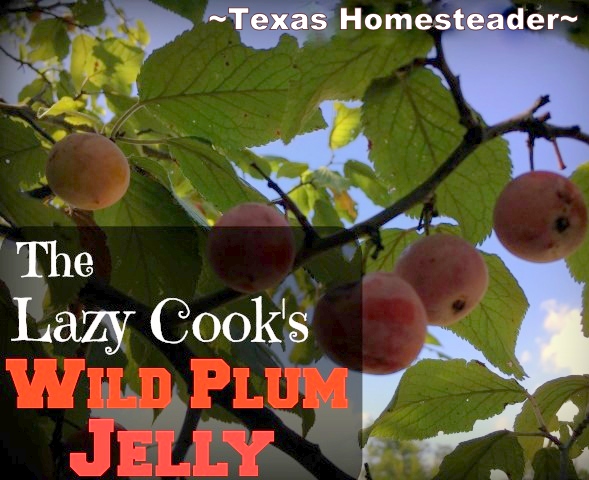
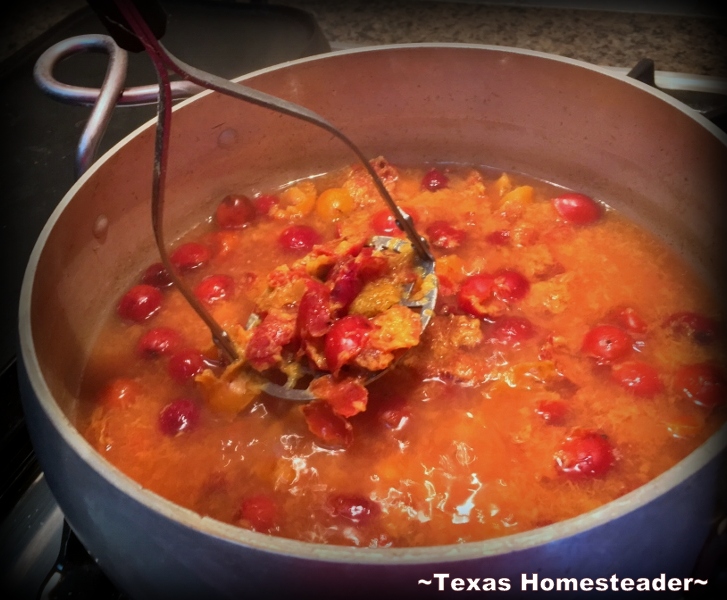
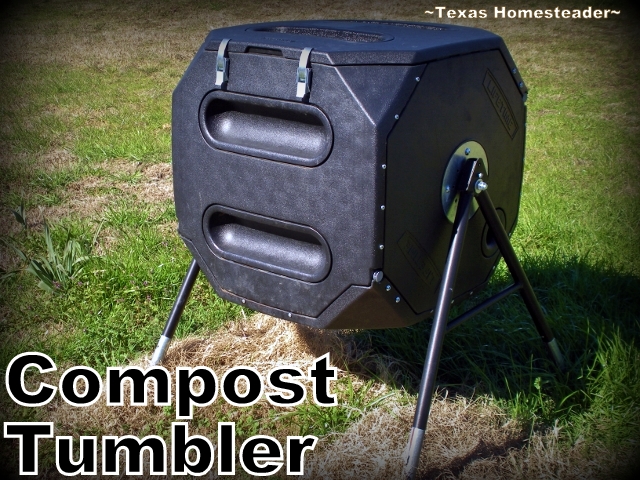
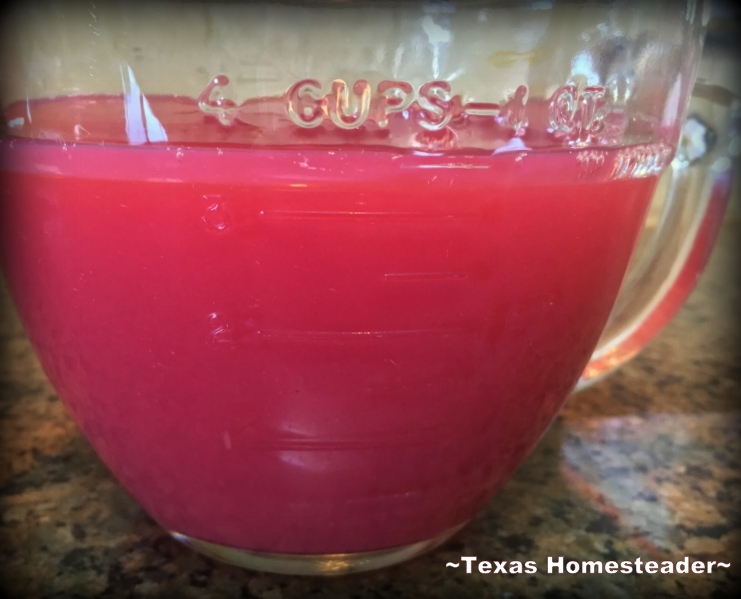
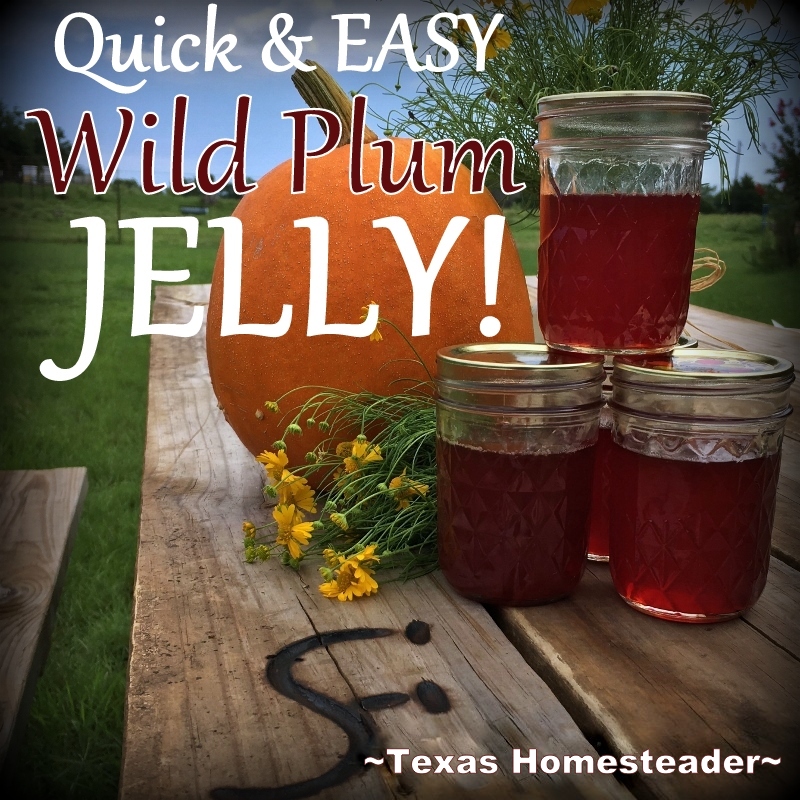
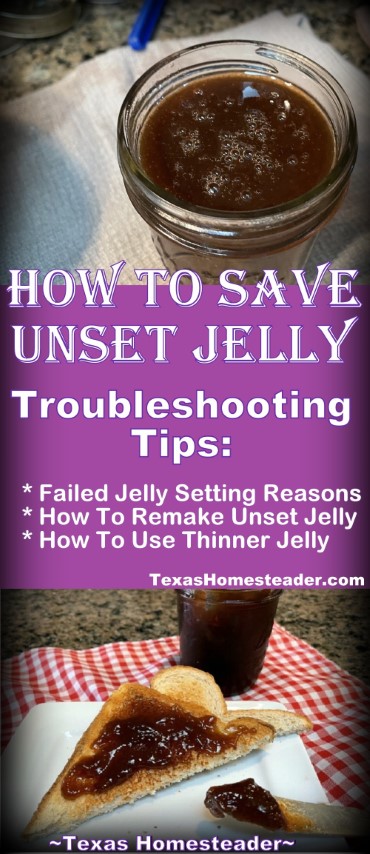
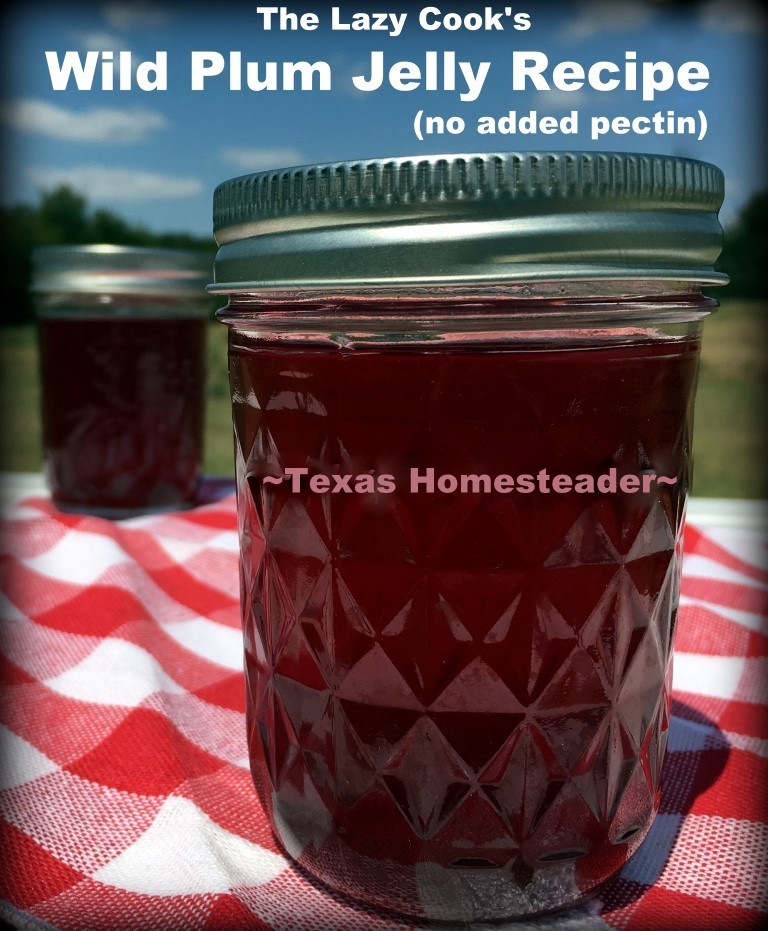
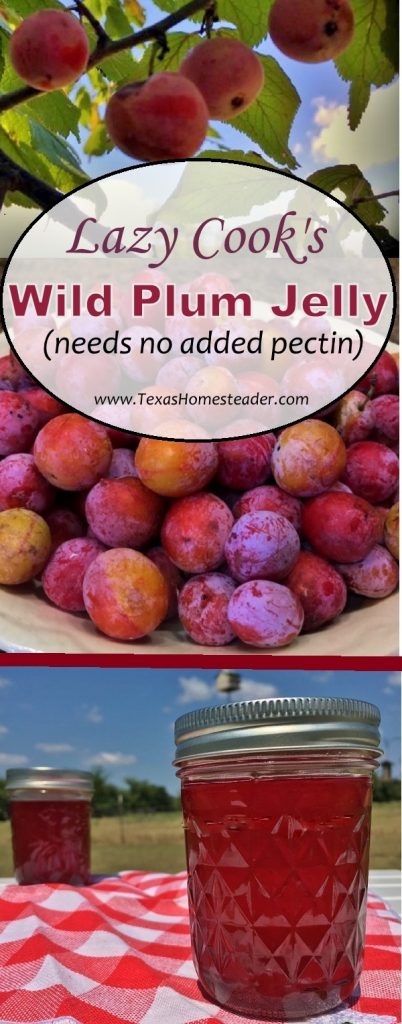



Thankyou, excellent recipe. Just been foraging and found wild plums and your web page.
Jelly came out pink and sweet tart flavour, just right,
From NZ.
So glad you loved it as much as we do Vicki. It makes a wonderful homemade gift idea too. Enjoy! ~TxH~
If I don’t have enough wild plums and I add some stire bought would I need to add pectin? I have more unripe wild plums than tipe if that helps. Thanks!
There’s more pectin in plums that are almost ripe than overly ripe ones. You’ll want the unripe ones to be close or they won’t be very sweet. But if I were in your position I’d totally buy enough ripe plums to finish giving me the quantity I needed for the recipe. Let us know how it comes out! ~TxH~
How long will the puree and juice stay good in the fridge before canning? I got sick right after I made the puree 5 days ago. Will it still be okay to make into jam?
You’re probably nearing the end of storage time for it. But if it smells and tastes ok I’d go for it and it will probably be fine. ~TxH~
I have a red/purple plum tree that puts off an amazing amount of fruit each year whether I want it or not. So after 5 years of having it in my yard I finally decided to do something different with the plums instead of throwing bags full of them at my neighbors lol. Your recipe is perfect and my first batch came out amazing! And I mean first batch like this is the first time I’ve made anything canned except for pickled eggs once in college and those sucked but the jelly. . . Perfect! Very happy I found your recipe and thank you for sharing. Making my 4th batch today and so far so good on each batch. You rock and thanks again.
I’m so glad you love it as much as we do. I’m warning ya – it’s addictive! ~TxH~
HI there,
I used your recipe for Wild Plum Jelly and followed it to a T, and my jelly did not set up.
I have store-bought pectin – can I re-heat the liquid and add the pectin to get it to set?
Thanks!
Kathleen
Oh no! Sorry to hear that Kathleen. Pectin is naturally occurring in plums, but is more heavily present in slightly under ripe plums. Including both ripe and several slightly under ripe ones as well as reaching 220 degrees F has always allowed my wild plum jelly to set perfectly. But sometimes, ya know, it happens to all of us. You should be able to rework your unset jelly using commercial pectin following the instructions in the box, although I understand reworking jelly doesn’t work 100% of the time. ~TxH~
Like you, my little wild plum tree has not produced for the last 2 years more because of late frosts than drought. This year I’ve been able to collect enough plums for a trial batch of jelly. I’m wondering if the reason it some times doesn’t setup for some people is because they add too much water in the initial boiling process? Barely covering they fruit with water as stated in the directions is pretty non-specific. I’m concerned about that.
Thanks for your question, Becky. I think the amount of water you add would be dependent upon the number of plums you are cooking and the size pot you’re using. But it just needs to be enough to get the plums to releasing their own juice without burning. The two reasons I can think of that the jelly wouldn’t thicken is not heating it to 220 degrees when cooking or not having a few underripe plums to add that natural pectin. Personally I think it’s because it’s too easy to choose all those beautiful, ripe, juicy plums and shun the les ripe ones. But there’s more pectin in the slightly underripe plums. That’s why I mentioned that I always pick mostly ripe along with a few just underripe plums. Enjoy the plum jam Becky – it’s amazing! ~TxH~
I made this jelly yesterday. When I ladle it into the jars what is the consistency supposed to be? It was very watery. Just wondering because it is still watery 24 hours later. What should I do?
Yes, the jelly will be very close to its final consistency when you put it in your jars. Wild plums are naturally high in pectin, so there’s no need to add purchased pectin to this wild-plum jelly recipe. I did a quick search & found that ‘Italian plums’ are lower in natural pectin than wild plums. Were you using wild plums or something else maybe? But what to do about your current batch? Well, although this wild-plum jelly has only failed to set for me once, I’ve certainly had other jams/jellies that didn’t set the way I wanted them to. I’ve poured out jelly that didn’t set and reworked it again with purchased pectin – in my case there were directions right on the pectin package for reworking jams/jellies that didn’t set. My results were varied.It often helped thicken it, but in my opinion it didn’t really didn’t bring the jam/jelly to its full thickness.Still, you might try that? Also I’ve read that some jellies that didn’t set will get slightly thicker over time (I believe it was about 30 days) Other than that I’ve often heard that others will use jelly that didn’t set in other ways such as ice cream topping & such. Maybe you can remake it into something that you can enjoy? Let us know what you decide and how it works. Good luck! ~TxH~
I’m so happy I found this recipe! I have so many golden wild plums this year. I was able to can 4 pints, 6 half pints, and 6 quarter pints of jelly! I can’t wait to try it. I just took it out of the canner and they pinging away!!!
OMGosh Jennifer, is there any more melodic sound than that ‘ping’ from freshly-canned jars of food?? You’re gonna love this wild-plum jelly! ~TxH~
I wanted wild plums so badly, but couldn’t find them. I ordered chickasaw and mexican plum trees from Nativ Nursery, they have a rapid mast system that makes the root system fantastic, the trees grow so fast and are so healthy. If you want loaded trees with beautiful fruit I would suggest their trees. I made jelly (used your receipe), jam, chutney all this year with my plums and my trees were planted in 2014. Last year i planted paw paw, persimon crab apple and pecan from them, the trees were beautiful when received and have grown so much since planted I am amazed.
Hi, is there a way to store not canning it? Can it go in something else?
Jennifer, I’d think you could store it in your refrigerator or freezer instead. Seems I’ve read the typical homemade jelly can be stored in the refrigerator for about 3 weeks or frozen for a year. Do your research so you’re comfortable with the length of storage for your situation, but your refrigerator and freezer can be your non-canning friend! ~TxH~
What is a recipe for Plum syrup.Have you made it.I don’t have recipe for it.I have red wild plums
I made plum jelly with your recipe.looks good can’t wait to have it on toast.san
Sorry, I’ve never made plum syrup Sandy so I’m not much help there. ~TxH~
can u use honey instead of sugar? next year I will get honey from my bee hives.
This recipe doesn’t call for honey, Dana, so I can’t vouch for the safety of a honey substitution. We are in our 2nd year of beekeeping & I’m also searching for honey recipes so if I find out I’ll let ya know. Congrats on your hives, girl. It’s exciting, isn’t it??!! ~TxH~
How long does the jelly take to set up?
I cook the jelly to 220 degrees and then water-bath can it. My jelly thickens more as it cools after canning. I leave the canned jars undisturbed for 24 hours. Afterward I remove the rings * the jelly is always thick and jelly-like. I’ve heard that sometimes if your jelly doesn’t thicken immediately (or by the next day) that it will thicken slightly over the next 30 days or so. I’ve found this to be the case with jellies I’ve made in the past that weren’t thick after I canned it. ~TxH~
I made 14 jars of this recipe it looks great but it looks very watery…. How long does it take to set …. Loved the receipt very easy…,
Oh no, Marg! This wild-plum jelly is often semi-soft when I make it to it stirs in beautifully for my homemade yogurt or to spread on toast or biscuits. But one of my batches this year didn’t jell either (not sure what happened – I’ve never had that problem before with this jelly) Although the jelly will thicken as it cools, I waited until the next day & the jelly was still not jelled. So I dumped it all back into a clean pot and heated again to 220 but this time I let it stay there for a few minutes. Then I re-processed it in a water-bath canner and it jelled beautifully. The only thing I can think of is perhaps the probe for my thermometer was too close to the bottom of the pan (and therefore too close to the heat source) and maybe the whole pan of simmering jam didn’t reach the required 220 degrees? Not sure but it jelled fine for me when I reprocessed it the next day. I will say that there are some who say un-thickened jelly will become thicker over the next 30 days or so. I’ve seen that happen with my honeysuckle jelly so take that for what it’s worth. But if it were me, I’d wait 24 hours and if it wasn’t thick I’d assume that I’d need to reprocess it. Good luck! ~TxH~
Not to criticize you in your finish product, but why are the jars of jelly pictured in the recipe pin only roughly 2/3 full. If you water bath canned this jelly, you should always fill the canning jars to within 1/4 inch of the top rim of the jar. This is strictly my own observation and opinion.
I’ve heard that advice from another commenter as well. In this case, I simply divided up the jelly to the jars I had available. My bad – I’ll for sure note this in the post! ~TxH~
I love plums in all forms – fresh. jams and jellies, puddings …. but I struggle to grow them as we always seem to get frost or string winds at flowering time. However I did find a small bag of them in the freezer that a friend gave em and yesterday we had plum, apple and mincemeat crumble. That was delicious! #WasteLessWednesday
I would love to find some wild plums! We have all kinds of wild fruit on our farm, but I haven’t found plums. I may have to plant some. I love plum jelly and it’s so beautiful. I’ll pin your recipe and hope I get to try it sometime.
I love plum jelly too Michelle. I was so sad when I thought the string of drought years had taken all my trees but very excited to see a tree tucked in the back bloom last spring. Yep, a plum tree that had survived the drought! It provided enough plums to make a hearty batch of plum jelly too, yea! ~TxH~
Brilliant! I love home canned jams and anything to make it easier just makes it better. Thank you!
Blessings, Leigh
I have never tried making jelly before, but this post really makes me want to give it a try! Thank you for the motivation 🙂
Jelly is super easy to make Angie. Especially those that require no pectin – a great recipe for beginners. Give it a try! ~TxH~
Last year a friend gave us plum jelly and we loved it. Now I can make my own. Thanks!
This looks so good! I am thinking of homemade gifts for family and friends, and this would be lovely. Unless I get greedy and keep it all for myself 😉
We’ve started making our Christmas gifts exclusively homemade for the last several years, Michelle. They’ve been well received. ~TxH~
That is some beautiful jelly! Thanks for sharing the recipe! #sustainablesundays
Awesome; and what a pretty color. Now I’m wanting to go around the country side to see if I can find me some wild plums.
Very fortunate to have your very own wild plums growing on your property.
Ok, just curious here; but why so much air space in the jars?
Thanks for sharing the instructions.
I love the color too Colleen. I used to have some large, productive and very easily accessible trees in the pasture but the drought killed off most of them. I’m pretty happy to have pinpointed a few medium-sized trees, although it’s odd they produce differently than each other. Maybe the sun-to-shade percentage or maybe the soil but I’m thrilled to be able to harvest at least a little something from them. The larger headspace in these jars is simply due to me trying to divide equal-ish the jelly that was made with the number of plums I was able to harvest. Since it’s wild plum jelly and you can’t just buy the amount of plums you need for a recipe, this recipe is based on how many wild plums you’re able to harvest any given season. I often just pour the leftover hot jelly into a snap-lid glass jar to keep in the fridge for us to enjoy now but we already have so much jelly in the fridge so I divided the jelly equally into the jars I was canning. ~TxH~
Oh this is sooooo awesome!! I have been looking for a recipe for wild plum jelly! We have several plum trees on our property and I just hate to see them go to waste. Thank you!
Those little fruits are small, Jo, but they’re powerfully flavored! 🙂 ~TxH~